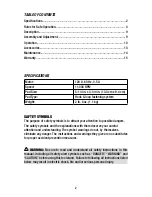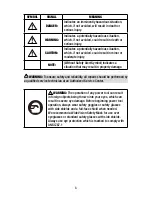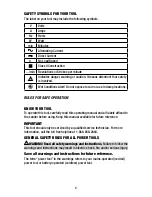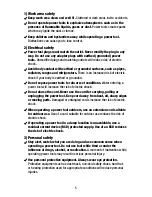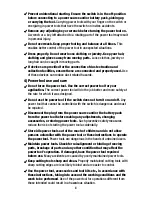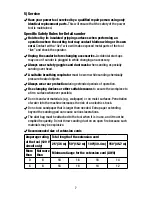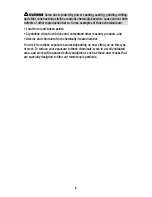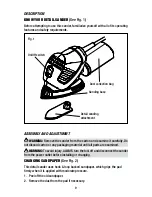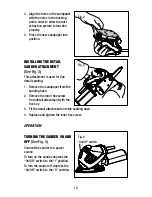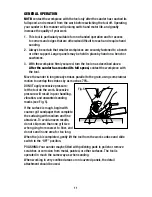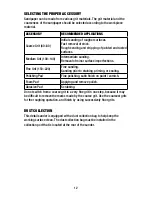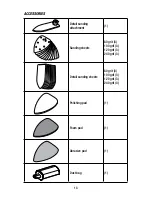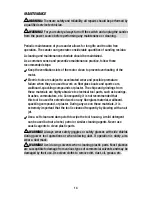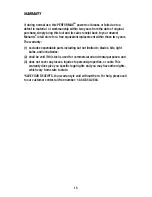
11
GENERAL OPERATION
NOTE:
contact the workpiece with the tool only after the sander has reached its
full speed, and remove it from the work before switching the tool off. Operating
your sander in this manner will prolong switch and motor life, and greatly
increase the quality of your work
1. This tool is particularly suitable for one-handed operation and for access
to corners and edges that are otherwise difficult to reach and require hand
sanding.
2. Always be certain that smaller workpieces are securely fastened to a bench
or other support. Larger panels may be held in place by hand on a bench or
sawhorses.
3. With the workpiece firmly secured, turn the tool on as described above.
After the sander has reached its full speed,
contact the workpiece with
the tool.
Move the sander in long steady strokes parallel to the grain, using some lateral
motion to overlap the strokes by as much as 75%.
DONOT apply excessive pressure;
let the tool do the work. Excessive
pressure will result in poor handling,
vibration, and unwanted sanding
marks (see Fig. 5).
If the surface is rough, begin with
coarser grit sandpaper then complete
the surfacing with medium and fine
abrasives. To avoid uneven results,
do not skip more than one grit size
when going from coarser to finer, and
do not sand in one area for too long.
When the job is completed, gently lift the tool from the work surface and slide
switch to the “OFF” position.
POLISHING: Your sander maybe fitted with polishing pads to polish or remove
scratches or corrosion from metal, painted, or other surfaces. The tool is
operated in much the same way as when sanding.
When working in very confined areas or on louvered panels, the detail
attachment should be used.
Fig. 5
Summary of Contents for 241-0964
Page 16: ...16...


